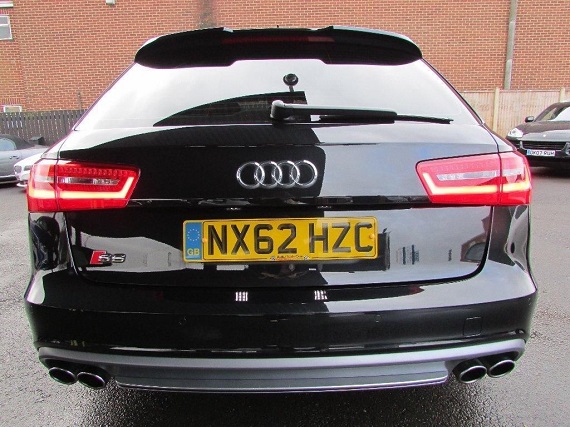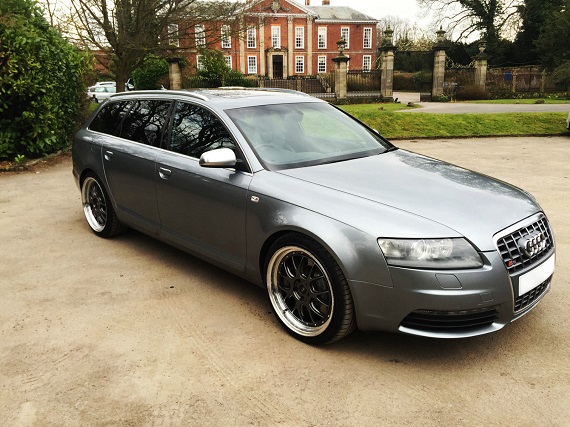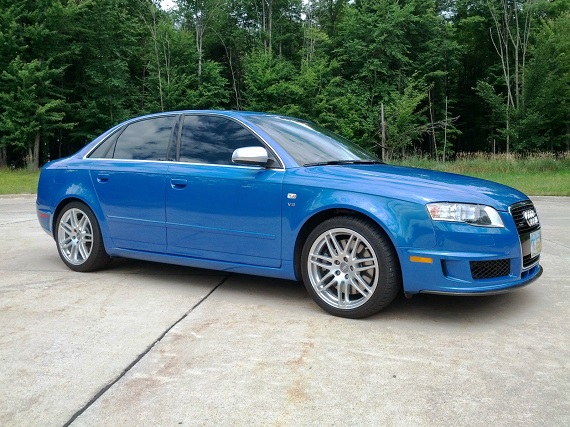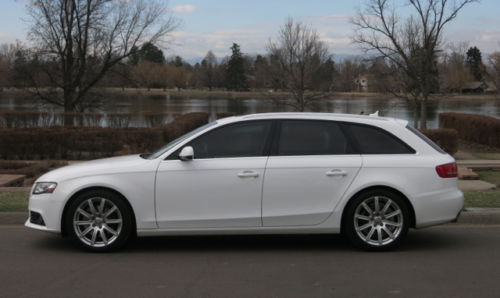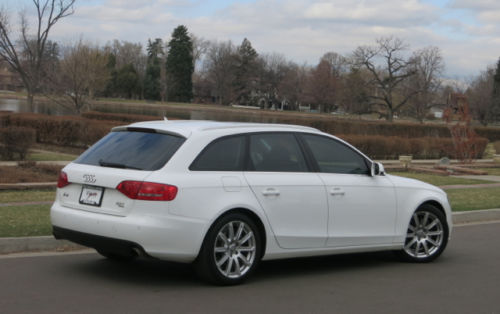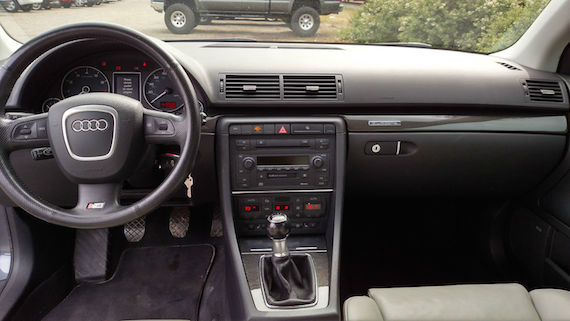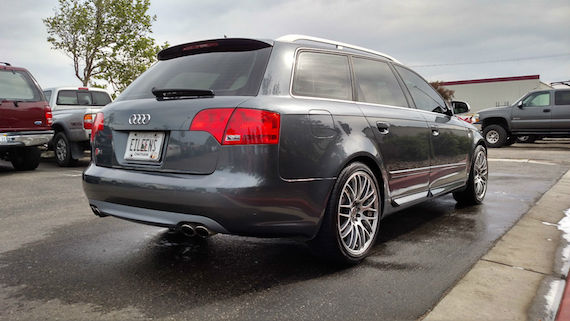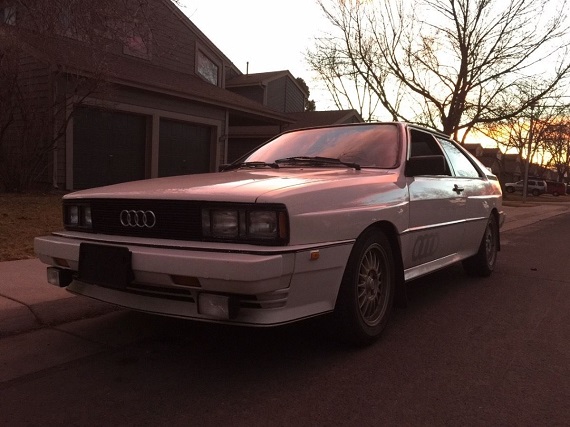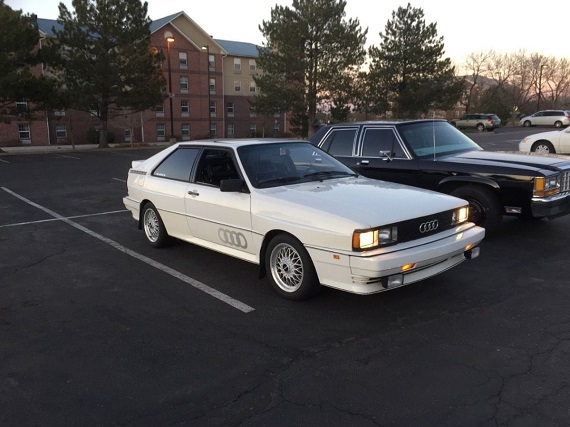For a few short years, Audi indulged us. In 1995 only, we received the first S6 Avant on U.S. shores; though the C4 Avant would soldier on until 1998, the 220-odd horsepower turbocharged 5 cylinder hooked to a manual transmission would be gone for a few generations and not seen again in the large wagon. Though the next generation C5 platform would grow in size, Audi would answer with a new S6 Avant for these shores. Now with a seemingly impressive 340 horsepower in an all-aluminum V8, it unfortunately only came to the U.S. in automatic form. It was still a very fast car, but one that catered to a slightly different crowd than the original. It was also, for all intents and purposes, a bit of a sales flop; enthusiasts I think correctly found it difficult to pay the premium when you could get the spiritual successor to the “Ur-S6” in the 6-speed manual, twin turbocharged Allroad 2.7T. As a result, when the new C6 platform launched, although there were new forms of the S6 Avant available, they stopped coming here. Indeed, as soon as we hit 2010, Audi stopped bringing the large Avant all together; you can thank the popularity of the Q7 for that. So today we’ll look at two of the forbidden fruit; the last two generations of S6 Avant that didn’t come to the U.S.:
Tag: Quattro
I think it’s wonderful that, as automobile enthusiasts, we’ve been able to live in the time period that revolutionized cars. For some, the muscle car era was the best; for others, the cars of the ’30s are the way to go. But while there may be some aspects of those generations of cars that are better, compare them to the high performance vehicles of today; they all start, stop, turn and run better than anything that has come before them. Not only are the limits of performance higher than they’ve ever been, but today’s cars are frankly better at being cars than older examples. Quite simply, it’s amazing considering the amount of electronics that are now carried on cars; get my iPhone cold or drop it, and it goes all haywire – yet sub freezing (as well as scorching) temperatures and pot holes are the norm for cars to soak up. Inside, cars are more quiet and luxurious than they ever have been, in general. If you never went past 1/4 throttle in a B7 S4, you’d have a refined, quiet luxury car. It’s even handsome, too, with a smooth face giving way to the lovely flared arches, a slight uptick in the tail helping to direct the air. But really setting cars apart over the past few years has been the amazing power they’ve been able to produce and their uncanny ability to transfer that power to the road. Go past that 1/4 pedal in this S4 and the experience changes; suddenly, you don’t have a sedate cruiser, you have a warp-speed sports car capable of carrying four shocked friends being forced back in their seats as the 4.2 liter all-aluminum 340 horsepower V8 heads towards the stratosphere, announcing through the 4 exhaust pipes that you’ve now broken every speed limit in the country and you still have three gears to go. Yet while there have been fast Audis in the past, “true” enthusiasts always complained they were heavy and no fun in the corners. To remedy that perceived fault, starting with the 25th Anniversary Edition and going forward, S4s received the same T3 Torsen setup as the RS4, now with a rearward power bias and capable of moving up to 100% of the power to the rear axle. If you think you know what all Audis drive like by reputation, you probably haven’t driven one of these cars. By the end of the B7 run, it was not a beefed up A4 anymore; it was in reality a slightly detuned RS4:
CLICK FOR DETAILS: 2008 Audi S4 DTM Edition on Craigslist Cleveland
4 CommentsWhen Audi launched the A4 Avant with the B5 series, it was a bit of a trump card for the small wagon enthusiast. True, the Volkswagen Passat had been available in 5-door form for a few generations, and it VR6 form it was quite entertaining. However, quality of the pre-B5 chassis Passats wasn’t the best, and all-wheel drive had only been available with the Quantum for a few short years in the late 1980s. Audi had offered its unique large Avant platform in both 5000/200 and S6 form, but they were pretty expensive relative to the small cars the company offered. The A4 Avant continued on for through the B7 chassis we saw yesterday; a serious improvement in looks over the rather plain looking B6. When the B8 launched, initially I thought “There goes Audi again, following the formula of making everything bigger”. The B8 was a LOT bigger than the original A4 had been; in fact, park one next to an original A6, and the B8 A4 is dimensionally it was only slightly smaller. There was one key difference, though. Sure, the A4 had been stretched in every direction – but most importantly, you’d find that the wheel base was now the best part of a foot longer than the early Audi platforms. Visually that shortened the notoriously long overhangs of the Audis and offered more legroom to the occupants. Anyone who has ever been in the back of a B5 A4 would certainly appreciate that. Amazingly, too, the new A4 was lighter, and thanks to revised suspension geometry, new and more advanced computers and a torque-laden 2.0 turbo motor, it felt and drove considerably better than any of the previous generations had, too. It even looked really good in my mind. It was an instant success as previous generations had been, making one wonder even more why it went away:
CLICK FOR DETAILS: 2010 Audi A4 2.0T quattro Avant on eBay
3 CommentsHaving just sold my 2006 S4 Avant, I thought kicking off wagon week with this 2005.5 long roof S4 would be appropriate, While this example is very similar to the one I had there are some key differences that lead me to believe the seller’s asking price is completely reasonable, despite what the timing chain alarmists will say. This is a two owner car with  under 80k on the clock and the all important 3rd pedal option. My car was a TipTronic model (please, put down your pitchforks) and ultimately that was the reason I didn’t hang onto it longer. I loved the way the car drove, especially with the H&R Sport/Koni Yellow set up I had on it but at the end of the day I just couldn’t live with the automatic. Most S4 Avant owners know this and for that reason you’ll see stick shift examples often priced way higher than what one would consider reasonable. This is not one of those examples, not even close. I got just a few grand less for my automatic with 112k on the clock and a few things that needed attention. Whether that means I got more than I should have or this car is priced very competitively is ultimately up to you to decide but I think it’s the latter.
CLICK FOR DETAILS: 2005.5 Audi S4 Avant on eBay
1 CommentIt’s a sigh of relief to see a market correction in classic Audi’s favor. For such a long time, Audis were simply unappreciated; but innovative designs, great looks and solid build quality mean that those who hung on for the depreciation ride are now smiling a bit more. There’s simply more appreciation for the classic Audis now then perhaps ever; even perhaps more than when they were new. That’s because back then, no one knew what they were, really – but today, the legend of Quattro has spread and thanks to the proliferation of internet video, we still get to hear the raucous barking and watch the belching flames from the turbocharged inline-5. This past weekend, I took my Coupe GT out for a ride. I grabbed my cousin and we went to look at a new car for him; a 2009 Subaru WRX. Much like a modern interpretation of the original Audis, it’s apropos that we arrived in an Audi to take a look at it. What was perhaps more striking, though, was the reaction of the Subaru crowd. We showed up to a Subaru speed shop where the WRX was to be view, and instantly once within earshot, all of the crew at the garage came out to see the approaching Audi. It was a genuine show of respect, smiles, and thumbs up from a crew you wouldn’t automatically assume would know their history. Even more shocking, though, was the resounding appreciation they showed for the old car – more than often is seen at Audi-specific events. That’s the legend and the importance of the Quattro:
